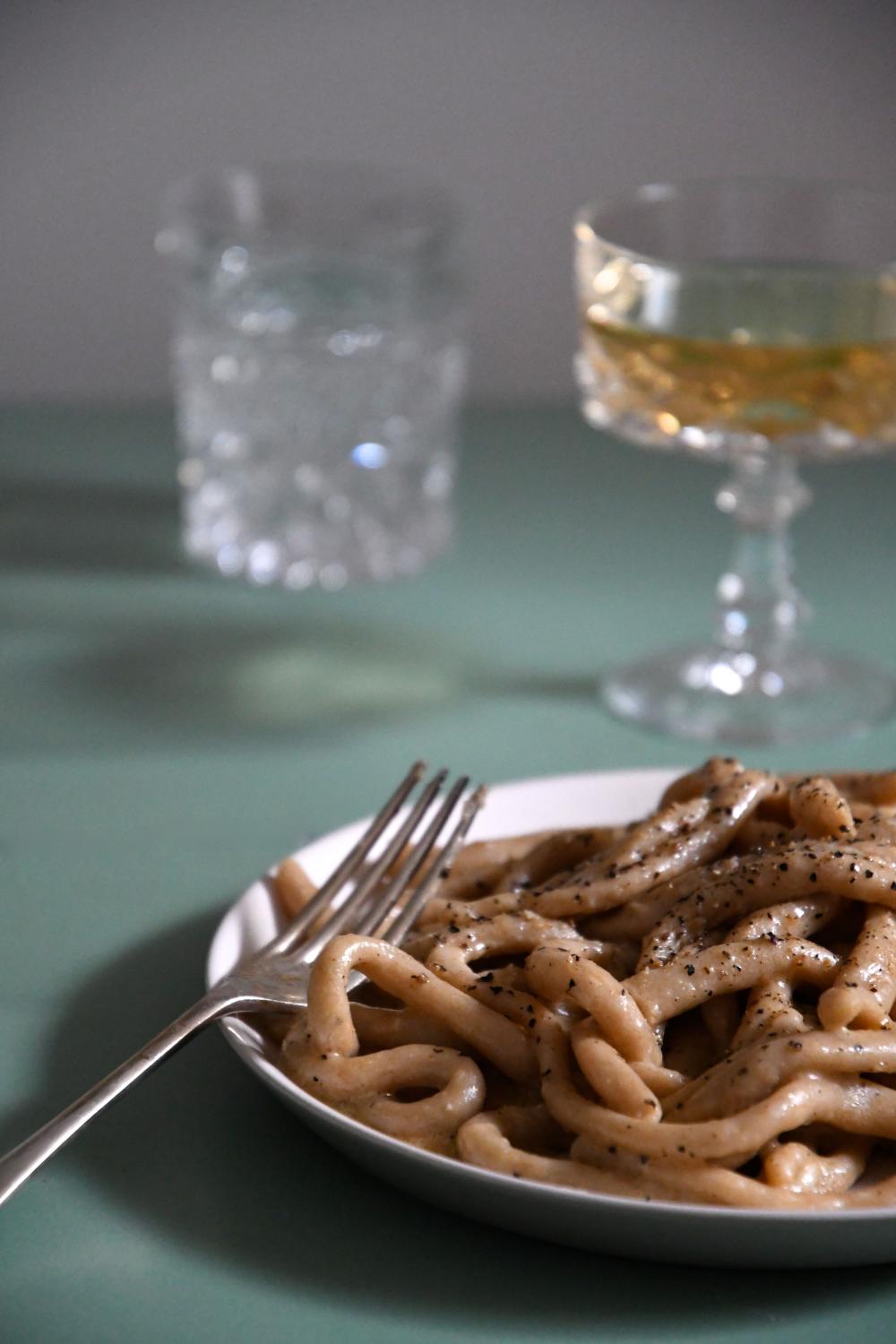Cacio e pepe is wonderful dish to have up your sleeve, especially at times when you have little in the fridge. All you need is some Pecorino Romano or Parmesan, black pepper, flour and water (or dried pasta) to create a beautifully simple dish. The butter I use in this recipe to add extra richness can be substituted for pasta water instead should you prefer to keep it at its most simple.
I like using a combination of Pecorino and Parmesan for the strength of flavour the Pecorino adds, but you can also just use one or the other. Using young cheese (rather than aged Pecorino/Parmesan) works better, as it melts more easily into a creamy sauce.
Our wholemeal Khorasan flour has a distinctive flavour, with subtle notes of fragrant hay or freshly cut grass, and butter. The sauce is subtle enough not to overpower it, and the toasted black pepper complements it well. Thick strands of the pici serve to collect up the creamy, peppery sauce with ease, and as it’s a fairly robust type of fresh pasta, it’s very easy to make with a wholemeal flour, which otherwise can require more delicate handling for pasta shapes that need to be rolled very thinly. The bran in this flour also gives it some bite.
The pici itself is easy to make, you don’t need a pasta machine. There’s no escaping the appearance of it (!) but the richness of the sauce soon allays any trepidation over its visuals…
By reserving the pasta cooking water, you can adjust the thickness of your sauce easily to suit your personal preferences.
Serves 2

